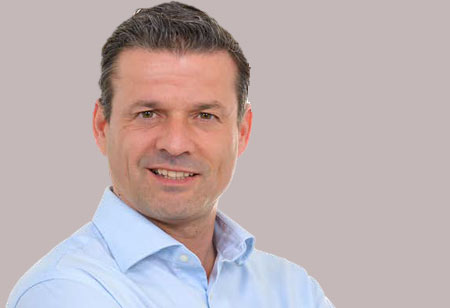Energy Law in Germany: More Necessary than Ever
The number of regulations and stipulations in energy law has expanded manifold in the last few decades. The German core law, Energiewirtschaftsgesetz (Energy Industry Act), grew from just around eight pages in 1998 to more than 220 in 2024— partly due to policies from the EU. Similarly, the Renewable Energy Sources Act expanded from five pages in 2000 to over 130 in 2024. Regulations and bureaucracy have taken over, complicating the work of both the industry and public administration. Energy law in Germany needs to be simplified.
Following the federal elections, a new government is forming, bringing opportunities to reshape policies and funding guidelines related to financing energy infrastructure, the green transition of heat supply (Wärmewende), and climate change adaptation.
Regarding the heat supply transition, major challenges such as financing and a shortage of skilled workers must be addressed, all while expanding renewable energies. The law on building heating (Gebäudeenergiegesetz, GEG) must be revised to include district heating, hydrogen, and biologically produced methane solutions. Additionally, the Federal Network Agency (Bundesnetzagentur, BNetzA) should amend its stipulations to prevent the deliberate circumvention of designated hydrogen network areas (FAUNA).
“Wärmewende” – How to Make Heating Green
Without regulatory adjustments that preserve existing infrastructure, the Wärmewende will not succeed. These regulations should compensate for necessary modifications in infrastructure and be accompanied by adjustments in subsidy policies. Furthermore, gas distribution networks remain a pillar of stability during the district heating transition and must not be abandoned prematurely.
"In uncertain times, it is best to “navigate by sight,” plan in five-year increments, and keep technical options open to gradually reduce CO2 emissions"
As of 2024, Germany has a total of 28,800 wind power plants (WPP) capable of generating 63.5 GW. Additionally, about 11,000 MW of wind power plants were approved by the administration in 2024—an increase of 70% from 2023. Gelsenwasser is also investing in solar and wind power, with wind farms generating an average of 7 MW or more per plant. This development is moving in the right direction for climate protection. However, further adjustments are necessary, particularly in modernizing the electric grid to accommodate new challenges arising from decentralized electricity supply, balcony power plants, and other sources.
Financing the Huge Investments
During the election campaign, the question of financing these changes was not adequately addressed, particularly regarding untargeted project funds. There was little discussion of alternatives beyond federal welfare. Consumptive spending and real investments were often conflated. In this context, reducing disparate funding—for example, the widely promoted heat pump—could be a reasonable step to allow other solutions, such as geothermal energy, to become economically viable. This reallocation would free up financial resources that are urgently needed elsewhere.
Energy supply has a profound impact on the economy, influencing industrial growth and competitiveness. Regardless of the new government’s composition, it must quickly answer the question that contributed to the previous government’s downfall: How will billion-euro investments in energy infrastructure be financed?
A significant portion of the new €500 billion infrastructure package, particularly the €100 billion designated for the KTF (climate transition fund), should be allocated to these challenges. However, this alone will not be sufficient. In the long run, the restructuring of energy infrastructure must be financed by the private sector. Since the state budget cannot shoulder this burden alone, monitoring system costs is essential. Actively influencing certain technologies is costly compared to targeted initial funding, which should be prioritized. Planning must also become more flexible. In uncertain times, it is best to “navigate by sight,” plan in five-year increments, and keep technical options open to gradually reduce CO₂ emissions. Such steps are crucial for enabling banks to provide external capital for the Wärmewende, ensuring a balanced risk-reward profile.
Continuing Climate Protection Wisely
Germany must take a careful approach to prevent a rollback of climate protection efforts. Recent surveys reveal public uncertainty or outright rejection of two key transformation measures: the promotion of renewables and the GEG for heating. Moreover, economic concerns— such as growth, affordable energy, and competitiveness—played a far more significant role in this election campaign than climate protection.
Upon closer examination, however, climate protection and economic growth can coexist—though not as the shortterm eco-economic miracle that some have envisioned. It is imperative that supply security and affordability become top political priorities, regardless of the ruling coalition’s composition. Stability and predictability in the legal framework must also be restored. Large-scale investments can only be realized under such conditions, even though they are not the sole factor for success.
European Perspectives
A few weeks ago, the European Commission introduced an omnibus package as part of the ongoing European Green Deal. The Clean Industrial Deal will introduce the Affordable Energy Action Plan to enhance the competitiveness of European industries by ensuring more reasonable energy prices.
As for the Gas Directive, its implementation at the national level is still pending under the new government. With the consultations for the Net-Zero Industry Act (NZIA) now closed, it remains to be seen how strategic promotion of a more energy-independent EU will be reflected in national policies.












